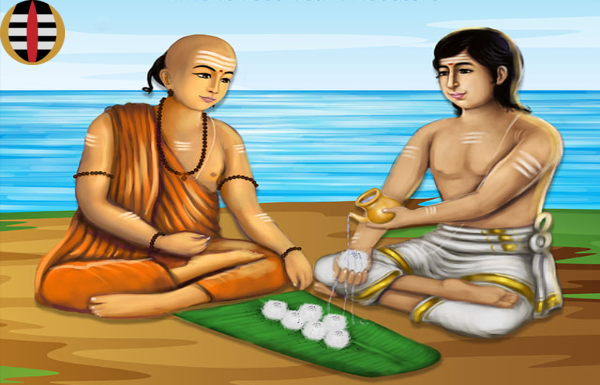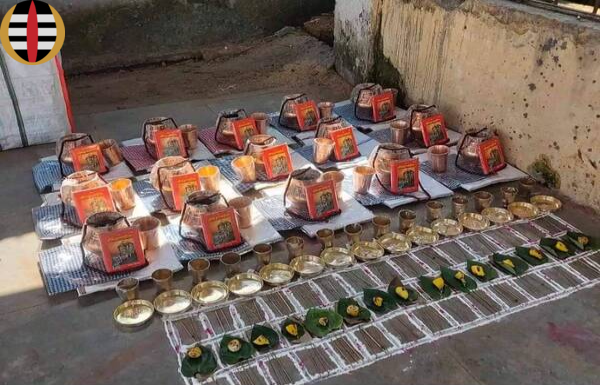Mahalaya Amavasya October 2024: Date, Timings, and Significance
Mahalaya Amavasya, also known as Pitru Paksha Amavasya, is an important Hindu observance that falls during the dark phase of the lunar month of Ashwin. It is the day when Hindus pay homage to their ancestors by offering prayers, food, and rituals. In 2024, Mahalaya Amavasya is observed on October 2, 2024. This day holds great religious and cultural significance, particularly for Hindus, as it is believed to be a crucial time for honoring the souls of ancestors and seeking their blessings.
Mahalaya Amavasya 2024 Date and Timings
The exact timings of Mahalaya Amavasya are critical for performing the necessary rituals and offerings to ancestors. According to the Hindu calendar, Mahalaya Amavasya will begin at 9:00 PM on October 1, 2024, and end at 6:45 PM on October 2, 2024. These timings are based on the lunar cycle and may vary slightly depending on the geographical location.
- Amavasya Tithi Starts: 9:00 PM on October 1, 2024
- Amavasya Tithi Ends: 6:45 PM on October 2, 2024
Significance of Mahalaya Amavasya
Mahalaya Amavasya marks the end of the Pitru Paksha, a 15-day period during which Hindus offer prayers and food to their departed ancestors. According to Hindu belief, during this period, the souls of ancestors come down to Earth, and it is considered a sacred duty to offer them nourishment in the form of food and water. This day is particularly special because it is believed that the offerings made on Mahalaya Amavasya help to appease and honor the souls of the departed, ensuring their peace in the afterlife.
The day also marks the beginning of the Navratri festival, a celebration dedicated to the worship of Goddess Durga. Mahalaya Amavasya is therefore seen as a period of spiritual cleansing and preparation for the festivities that follow.
Rituals Performed on Mahalaya Amavasya
The rituals performed on Mahalaya Amavasya are deeply rooted in tradition and are meant to bring peace to the souls of departed ancestors. Some of the key rituals include:
1. Tarpanam (Offering of Water)
One of the most important rituals on Mahalaya Amavasya is the Tarpanam. This ritual involves offering water to the souls of ancestors while reciting specific mantras. It is believed that the offering of water quenches the thirst of the departed souls and helps them attain peace.
2. Shradh Ceremony
The Shradh ceremony is another key ritual where food is offered to ancestors. Traditionally, a Brahmin (priest) is invited to perform the ceremony, and a meal is prepared with items like rice, ghee, black sesame seeds, and sweets. This meal is offered to the ancestors, and it is believed that by feeding the priest and the poor, the souls of the ancestors are satisfied.
3. Pind Daan
The Pind Daan is a ritual where rice balls, also known as Pind, are offered to the ancestors. These rice balls are made with sesame seeds, barley flour, and water and are believed to represent the bodies of the ancestors. This offering is made at holy rivers or sacred spots, as it is considered auspicious to perform the Pind Daan near a water body.
4. Recitation of Mantras
Mantras play a significant role in the observance of Mahalaya Amavasya. Vedic hymns and Pitra Sukta mantras are recited to invoke the blessings of the ancestors. These mantras are believed to help the souls transition smoothly to the afterlife and grant blessings to their living descendants.
The Spiritual and Religious Importance of Mahalaya Amavasya
The spiritual significance of Mahalaya Amavasya cannot be overstated. According to Hindu mythology, the souls of the ancestors are believed to descend to Earth during the Pitru Paksha period. On this day, the gates of the Pitriloka (the realm of ancestors) are said to open, allowing the departed souls to bless their descendants. Hindus believe that performing rituals and making offerings on this day helps ensure the well-being of their ancestors in the afterlife, and in return, they receive blessings for prosperity, health, and success.
In addition to the religious and spiritual aspects, Mahalaya Amavasya also emphasizes the importance of family and ancestry in Hindu culture. It is a day of remembrance, where individuals reflect on the lives of their ancestors and express gratitude for the legacy they have inherited.
Mythological Stories Associated with Mahalaya Amavasya
The importance of Mahalaya Amavasya is highlighted in several Hindu myths and legends. One popular story is that of Karana, a warrior in the Mahabharata. Despite his immense strength and valor, Karana was denied entry to heaven because he had never offered food to his ancestors. In response, he prayed to the gods, who granted him an opportunity to perform the Shradh rituals during the Pitru Paksha. This story emphasizes the importance of offering food and prayers to ancestors for ensuring their peace in the afterlife.
Another significant story is related to Ganga, the holy river, which is believed to have been brought to Earth to cleanse the souls of the ancestors. The river Ganga holds immense spiritual significance, and many Hindus travel to its banks to perform the Pind Daan ritual during Mahalaya Amavasya.
Mahalaya Amavasya: Regional Variations and Celebrations
Mahalaya Amavasya is observed across India with slight variations in customs and traditions. In some parts of West Bengal, the day is associated with the beginning of Durga Puja, one of the grandest festivals celebrated in the region. On this day, Bengalis perform Chokkhu Daan, the ritual of drawing the eyes on the clay idols of Goddess Durga, symbolizing the infusion of life into the idol.
In South India, particularly in states like Tamil Nadu and Karnataka, Mahalaya Amavasya is known as Mahalaya Amavasai or Bhadrapada Amavasya. People here offer food to their ancestors and seek their blessings. In Rameswaram, a famous pilgrimage destination, thousands of devotees perform the Pind Daan on this day.
In Maharashtra, Mahalaya Amavasya is known as Sarva Pitru Amavasya, and it is a time when people perform Tarpanam and Shradh rituals for not just their immediate ancestors but for all departed souls.
Precautions and Guidelines for Mahalaya Amavasya Rituals
While performing the rituals for Mahalaya Amavasya, it is important to adhere to the guidelines prescribed by scriptures and traditions. Some key points to keep in mind are:
- The rituals should be performed in a clean and sacred environment, preferably near a river or a water body.
- The offerings made during the Shradh ceremony should be simple and vegetarian, as it is believed that ancestors prefer these foods.
- It is important to invite a Brahmin or a knowledgeable priest to guide and perform the rituals, ensuring that they are done in accordance with Vedic principles.
- Abstaining from consuming non-vegetarian food, alcohol, and other tamasic items on this day is considered auspicious.
Conclusion
Mahalaya Amavasya holds profound religious, spiritual, and cultural significance in Hinduism. It is a day dedicated to honoring the souls of departed ancestors through various rituals, prayers, and offerings. By performing these sacred rituals, Hindus believe they can bring peace to their ancestors and receive their blessings for prosperity and happiness.


